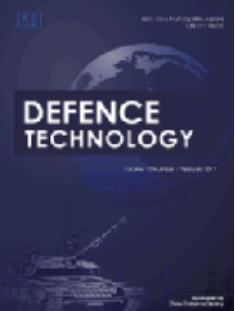Fabrication of energetic semiconductor Bridge with high efficiency, accuracy and low cost by 3D direct writing
IF 5.9
Q1 ENGINEERING, MULTIDISCIPLINARY
引用次数: 0
Abstract
Enhancing the output capacity of semiconductor bridge (SCB) through the application of composite nano-energetic films is a subject of wide concern. Furthermore, improving the safety, reliability, and production efficiency of energetic semiconductor bridge (ESCB) is the primary focus for large-scale engineering applications in the future. Here, the Al/CuO nano-film ESCB was efficiently fabricated using 3D direct writing. The electrostatic safety of the film is enhanced by precisely adjusting the particle size of Al, while ensuring that the SCB can initiate the film with small energy. The burst characteristics of SCB/ESCB were thoroughly investigated by employing a 100 μF tantalum capacitor to induce SCB and ESCB under an intense voltage gradient. The solid-state heating process of both SCB and ESCB was analyzed with multi physical simulation (MPS). The experimental results demonstrate that the critical burst time of both SCB and ESCB decreases with increasing voltage. Under the same voltage, the critical burst time of ESCB is longer than that of SCB, primarily due to differences in the melting to vaporization stage. The MPS results indicate that the highest temperature is observed at the V-shaped corner of SCB. Due to the thermal contact resistance between SCB and the film, heat conduction becomes more concentrated in the central region of the bridge, resulting in a faster solid-state heating process for ESCB compared to SCB. The results of the gap ignition experiments indicate that at a 19 mm gap, an ESCB with a film mass of 10 mg can ignite nickel hydrazine nitrate (NHN) and cyclotrimethylenetrinitramine (RDX). This suggests that thermite ESCB can serve as a novel, safe, and reliable energy exchange element and initiator in large-scale engineering applications.
三维直写技术制备高效率、高精度、低成本的高能半导体桥
利用复合纳米能膜提高半导体电桥的输出能力是一个受到广泛关注的课题。此外,提高高能半导体桥(ESCB)的安全性、可靠性和生产效率是未来大规模工程应用的主要焦点。本文采用三维直写技术制备了Al/CuO纳米薄膜ESCB。通过精确调节Al的粒径,提高了膜的静电安全性,同时保证SCB能以小能量引发膜。采用100 μF钽电容在强电压梯度下诱导SCB和ESCB,深入研究了SCB/ESCB的爆发特性。采用多物理模拟(MPS)对SCB和ESCB的固态加热过程进行了分析。实验结果表明,SCB和ESCB的临界爆发时间都随电压的升高而减小。在相同电压下,ESCB的临界爆裂时间比SCB的长,这主要是由于熔化到汽化阶段不同。MPS结果表明,在SCB的v形角处温度最高。由于SCB与薄膜之间存在热接触阻,热传导更加集中在桥的中心区域,导致ESCB的固态加热过程比SCB更快。间隙点火实验结果表明,膜质量为10 mg的ESCB在19 mm间隙下可以点燃硝酸肼镍(NHN)和环三甲基三胺(RDX)。这表明铝热剂ESCB在大规模工程应用中可以作为一种新型、安全、可靠的能量交换元件和引发剂。
本文章由计算机程序翻译,如有差异,请以英文原文为准。
求助全文
约1分钟内获得全文
求助全文
来源期刊

Defence Technology(防务技术)
Mechanical Engineering, Control and Systems Engineering, Industrial and Manufacturing Engineering
CiteScore
8.70
自引率
0.00%
发文量
728
审稿时长
25 days
期刊介绍:
Defence Technology, a peer reviewed journal, is published monthly and aims to become the best international academic exchange platform for the research related to defence technology. It publishes original research papers having direct bearing on defence, with a balanced coverage on analytical, experimental, numerical simulation and applied investigations. It covers various disciplines of science, technology and engineering.
 求助内容:
求助内容: 应助结果提醒方式:
应助结果提醒方式:


